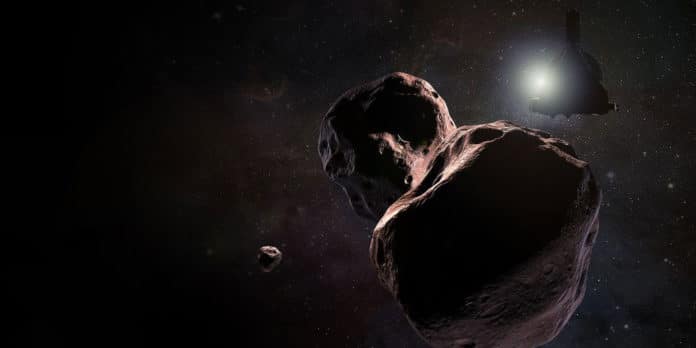NASA’s unmanned New Horizons spacecraft is closing its memorable New Year’s flyby target, the most distant world at any point examined, a frozen relic of the nearby solar system some 6.4 billion kilometers away.
The spacecraft’s nearest way to deal with this primitive space rock comes on January 1 at 12:33 am ET (0533 GMT). It is expected to put 2019 on the right flyby track.
The cosmic object, known as Ultima Thule, is about the span of the US capital, Washington, and orbits in obscurity and frigid Kuiper Belt around a billion miles past the diminutive person planet, Pluto.
Alan Stern, the principal investigator on the project at the Southwest Research Institute said, “This is a time capsule that is going to take us back four and a half billion years to the birth of the solar system.”
Currently, Horizons camera is focusing in on Ultima Thule, so researchers can get a sense of its shape and arrangement – regardless of whether it is one object or several.
Kelsi Singer, New Horizons co-investigator at the Southwest Research Institute said, “We’ve never been to a type of object like this before. The approach will help us determine what the actual shape of the object is.”
Stern reported, “The spacecraft entered encounter mode on December 26, and is very healthy. However, it takes almost six hours each way or about 12 hours and 15 minutes round trip to communicate with the spacecraft.”
Encounter Mode means the spacecraft is on its own now. With thousands of instructions loaded into its onboard computers, it has begun its delicate dance, 1 billion miles past Pluto.
As it stands, New Horizons will flyby Ultima Thule from a distance of 3,500 kilometers ( about 2,200 miles) — its optimal path. New Horizons cameras snapped those as it flew 12,500 kilometers (about 7,800 miles) from the surface of the far-off dwarf planet.
Visitors will be able to catch the reactions and live simulations of the flyby on the New Horizons mission website. Data and images from the flyby are expected later on New Years Day, sometime after 11:30 a.m. ET.
